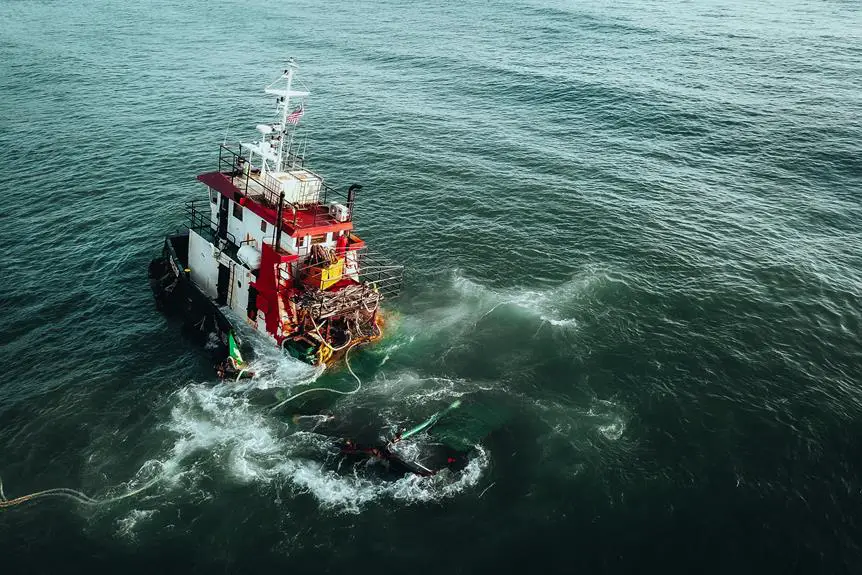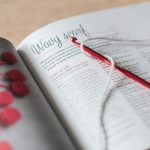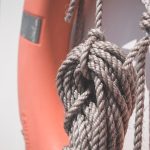So you think sewing marine vinyl at home is a breeze? Think again. Mastering the art of sewing with this tough material takes skill and know-how.
But fear not, with these 5 expert tips, you'll be a marine vinyl sewing pro in no time.
From choosing the right needle to finishing seams with seam sealer, we've got you covered.
Let's dive in and elevate your sewing game to the next level.
Key Takeaways
- Use a needle specifically designed for heavy fabrics or leather and choose the appropriate size for sewing marine vinyl.
- Select a high-quality thread designed for outdoor or marine applications, such as polyester or nylon thread.
- Adjust the tension and stitch length on a scrap piece of marine vinyl before starting the actual project to ensure smooth and secure stitches.
- Use binder clips to prevent shifting of material and help align multiple layers of vinyl, especially for larger or thicker materials.
Choosing the Right Needle
Selecting the appropriate needle is crucial when sewing marine vinyl at home. The type of needle you use can significantly impact the outcome of your project. For sewing marine vinyl, it's recommended to use a needle specifically designed for heavy fabrics or leather. These needles have a wedge-shaped point that can penetrate the vinyl without tearing or damaging it. When choosing a needle, consider the thickness of the vinyl as well as the type of sewing machine you're using.
In addition to needle types, thread choices also play a vital role in sewing marine vinyl. It's important to use a high-quality thread that's durable and designed for outdoor or marine applications. Look for threads that are UV resistant, as they'll withstand exposure to sunlight without deteriorating. A polyester or nylon thread is a good choice for sewing marine vinyl due to its strength and resistance to environmental elements.
Adjusting Tension and Stitch Length
When sewing marine vinyl, it's important to adjust the tension and stitch length on your sewing machine to ensure smooth and secure stitches. Proper tension and stitch length are crucial for achieving professional-looking results with marine vinyl.
Here are some tips for adjusting tension and stitch length:
- Thread Choice: Select a heavy-duty thread specifically designed for use with marine vinyl. This type of thread is strong and durable, ensuring that your stitches will hold up well under the stress of outdoor or marine environments.
- Needle Size: Use a needle that's suitable for sewing marine vinyl, such as a size 16 or 18 needle. A larger needle size will help penetrate the dense material more effectively, reducing the risk of skipped stitches and thread breakage.
- Test Stitches: Before starting your actual sewing project, it's a good idea to test the tension and stitch length on a scrap piece of marine vinyl. This allows you to make any necessary adjustments and ensures that your machine is set up correctly for the specific material you're working with.
Using Binder Clips for Holding
To ensure that your marine vinyl stays in place and aligned during sewing, use binder clips for holding, particularly when working with larger or thicker pieces of material. Binder clips are an essential tool for keeping the fabric in position without causing any damage. They are especially useful when sewing marine vinyl, which can be more challenging to handle due to its thickness and slippery nature.
| Advantages | Tips for Using Binder Clips for Holding |
|---|---|
| Prevents shifting of material | Place the clips evenly along the edges to distribute tension |
| Minimizes distortion during sewing | Use clips that are rust-resistant to avoid any stains on the fabric |
| Helps in aligning multiple layers of vinyl | Remove the clips as you sew to prevent the needle from hitting them |
| Can be repositioned easily | Do not place the clips too close to the sewing line to avoid interference |
| Suitable for larger or thicker materials | Use adhesive remover to get rid of any residue left by the clips |
Employing a Teflon or Non-Stick Foot
For securing marine vinyl in place while sewing at home, your sewing machine's non-stick foot is essential for smoothly feeding the material and preventing it from sticking. This special foot is designed to glide over the vinyl without causing any friction, ensuring precise and smooth stitches.
To make the most out of your non-stick foot, follow these tips:
- Keep it clean: Regularly clean the non-stick foot to prevent any buildup of residue that might affect its smooth gliding capabilities.
- Adjust the pressure: Depending on the thickness of the marine vinyl, adjust the presser foot pressure to ensure that the material is held firmly in place without causing any drag.
- Use the right needle: Pair your non-stick foot with a suitable needle designed for heavy fabrics or vinyl to ensure seamless sewing without any snags or skipped stitches.
Ensuring the proper maintenance of your sewing machine and utilizing the right accessories like the non-stick foot is crucial for achieving professional results when working with marine vinyl.
Finishing Seams With Seam Sealer
Maintaining the integrity of your marine vinyl projects involves utilizing a seam sealer to ensure long-lasting durability and water resistance. Seam sealers are essential for preventing fraying and enhancing the waterproofing techniques of your marine vinyl creations.
To finish the seams with seam sealer, start by choosing the appropriate type of seam sealer for marine vinyl. Look for seam sealers specifically designed for waterproofing and durability. Once you have the right seam sealer, carefully apply it along the seams of your marine vinyl project, ensuring full coverage to prevent any potential fraying and to enhance the water resistance of the seams.
Be sure to follow the manufacturer's instructions for the specific seam sealer you're using. Take the time to seal all the seams thoroughly to ensure maximum protection and longevity for your marine vinyl projects.
Frequently Asked Questions
Can Marine Vinyl Be Used for Outdoor Upholstery Projects?
Yes, marine vinyl is suitable for outdoor upholstery projects due to its durability and resistance to the elements. It's a great choice for withstanding outdoor conditions and providing long-lasting protection for your furniture.
How Do I Clean and Maintain Marine Vinyl Items Once They Are Sewn?
To maintain marine vinyl items, you should regularly wipe them with a mild soap and water solution. For tough stains, use a vinyl cleaner. Prevent mildew by keeping items dry and using a vinyl protectant.
Can Marine Vinyl Be Used for Making Waterproof Bags or Outdoor Gear?
Yes, marine vinyl is suitable for waterproof backpacks and outdoor gear construction. Its durable, water-resistant properties make it ideal for such applications. When sewing marine vinyl, use a heavy-duty needle and consider using a walking foot attachment for better results.
What Type of Thread Is Best for Sewing Marine Vinyl?
For sewing marine vinyl, the best thread is a heavy-duty polyester or UV-resistant polyester thread. Choose a needle size appropriate for the thread's strength, such as a size 16 or 18 needle. This ensures smooth and durable stitches.
Are There Any Specific Techniques for Sewing Curves or Corners With Marine Vinyl?
When sewing marine vinyl, use specific techniques for curves or corners. Sew slowly, use clips to hold fabric in place, and consider using a Teflon foot to help the fabric glide smoothly. These sewing tips ensure professional-looking results.
- Tetron Fabric for Marine Applications: Durability and Use Cases - June 18, 2025
- Tetron Fabric for Outdoor Furniture: Weather Resistance and Care - June 18, 2025
- Tetron Fabric for Wall Coverings: Style and Application Tips - June 18, 2025







